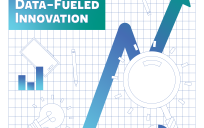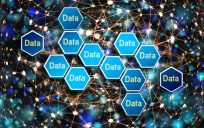Big data is a versatile tool for the government to examine what is happening in our country on a minute level. Big data can tell you anything – from statistics on population, to federal spending, and all the way to density of commercial businesses such as coffee shops.

This month’s DorobekINSIDER Live, called “Should You Be Dating Data?” covered big data organized by the government through data.gov. Christopher Dorobek of the podcast DorobekINSIDER hosted the event, and the two speakers were Pat Fiorenza, Senior Research Analyst at GovLoop, and Rebecca Williams, Senior Engagement Liaison for data.gov at the General Services Administration. Listen to the entire event here.
Firstly, what is big government data and data.gov?
First, Fiorenza shared with us some of the basics on big data. Unfortunately, there is no one singular catch-all definition for big data. For a huge amount of information on government big data, see the recently published GovLoop guide “The Big Data Playbook For Government”. Williams enlightened listeners on how data.gov is being implemented to help the government do its job better with big data.
Data.gov is a massive clearinghouse of data generated and organized by the government, home to over 138,000 datasets across categories and topics, and covering state, local, and federal data. And, according to Williams, “That’s just the tip of the iceberg.” There’s much, much more government data to be added to the site, and it will continue to grow exponentially.
What is the purpose of publishing the government’s big data?
Especially since the passing of the Data Act in 2014, there has been a great emphasis on collecting, publishing, and using government data. According to Williams, generally, the aim of data.gov is to promote government efficiency and transparency through increasing the availability and accessibility of big data.
It is accessible to anyone – not just federal employees. If an American citizen, or even an official in another country, wants to access the data, it’s available to them. According to Williams, offering this sort of specific government data to the masses has been applauded internationally, and the U.S. has been hailed as a leader in this field.
Data.gov provides the raw ingredients for government innovation, explained Williams. “Sometimes data is less sexy to talk about, but it’s behind all these great innovations,” she said. Individuals mine the materials from data.gov, and apply them to develop new mobile applications, software, research papers, and so on. According to Williams, even the existence of the highly useful Weather Channel is entirely reliant on government data.
How does the government know that they have an audience? Who is the audience for big government data?
They know it’s being used because they hear from the users directly on a regular basis. Additionally, and perhaps more powerfully, website analytics reveal that it’s a popular resource. “There are data-driven elements [to data.gov] that allow you to tell what the public wants that they don’t already have,” explained Williams.
People from both the private and public sectors can and do access the data, and Williams informed us that a large percentage of the people accessing data.gov come to the website via basic Google searches of the specific type of information they want. So, data.gov has been proven as a valuable resource for government and non-governmental players alike.
There are a couple of critics who may suggest a lot of the data is useless or irrelevant. In terms of government transparency, however, the data is still useful. Williams left us with the assertion: “Even if the government has a dataset that isn’t particularly useful, that should be transparent, because as a citizen, taxpayer, and a member of the community and the country, I have a right to the information the government is collecting.” Big data, without a doubt, is worth the effort.





Leave a Reply
You must be logged in to post a comment.